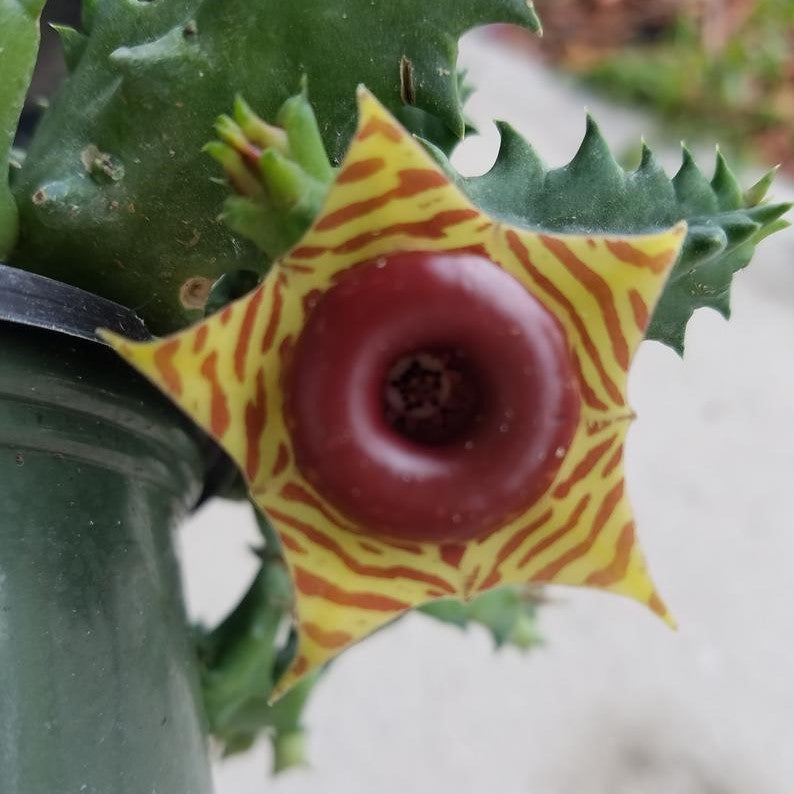Porcupine Huernia
Family
Asclepiadaceae
Origin
South Africa.
Description
Huernia zebrina is a low-growing perennial succulent species more or less creeping, occasionally forming mats. It is one of the most beautifully flowering huernias and very popular in cultivation for its odd blooms. It has a raised, glossy, wine-red ring or 'annulus' around the mouth of the corolla tube. The corolla varies in size and is usually patterned with wine-red zebra stripes which vary conspicuously in colour intensity. One of the so-called lifebuoy huernias because of the glossy raised annulus.
Stems are decumbent-erect, laxly branched, tapering, prominently 5-(to 6) angled, and irregularly branching, 5 cm long, 12 mm in diameter and strongly toothed. Teeth 4,5 mm long.
The flowers are striped bright yellow and red with a thick rubbery ring in the center
Environment
Huernias prefer bright light or partial shade. In nature, they grow underneath shrubs or other plants. Too much sun causes stems to develop protective reddish or purple pigmentation and can actually scald the stems. Too little light leads to weak, thin growth with decreased flower production.These plants grow best between 10 and 27 C. Protect them from freezing weather..
Huernias require a potting mix with excellent drainage. A succulent plant mix of 50 percent perlite, 25 percent vermicompost and 25 percent sand helps prevent rotting and over watering. Roots experience die back in cool-season dormancy, so plants grow best in shallow containers that allow the soil to dry out quickly. Using clay pots further helps soil from staying too wet. An underlayment of coarse gravel below the soil mix also improves drainage. In climates with damp cool summers, a layer of gravel between the plant and the soil mix also helps prevent the stems from staying too moist. Outdoor plantings do well in raised beds.
Landscape Use
Suitable for Container, Rock Garden & Xeriscaping






















